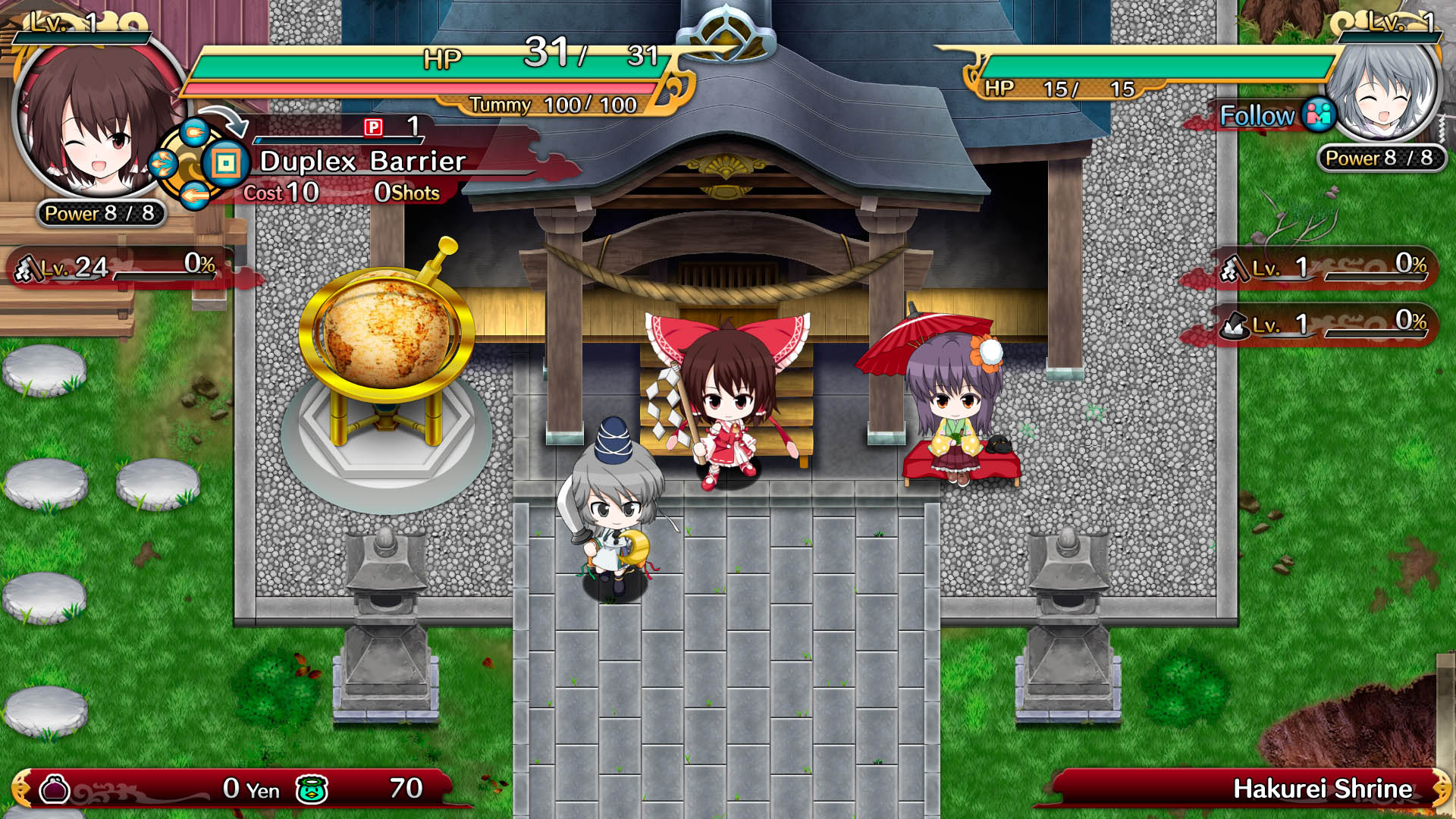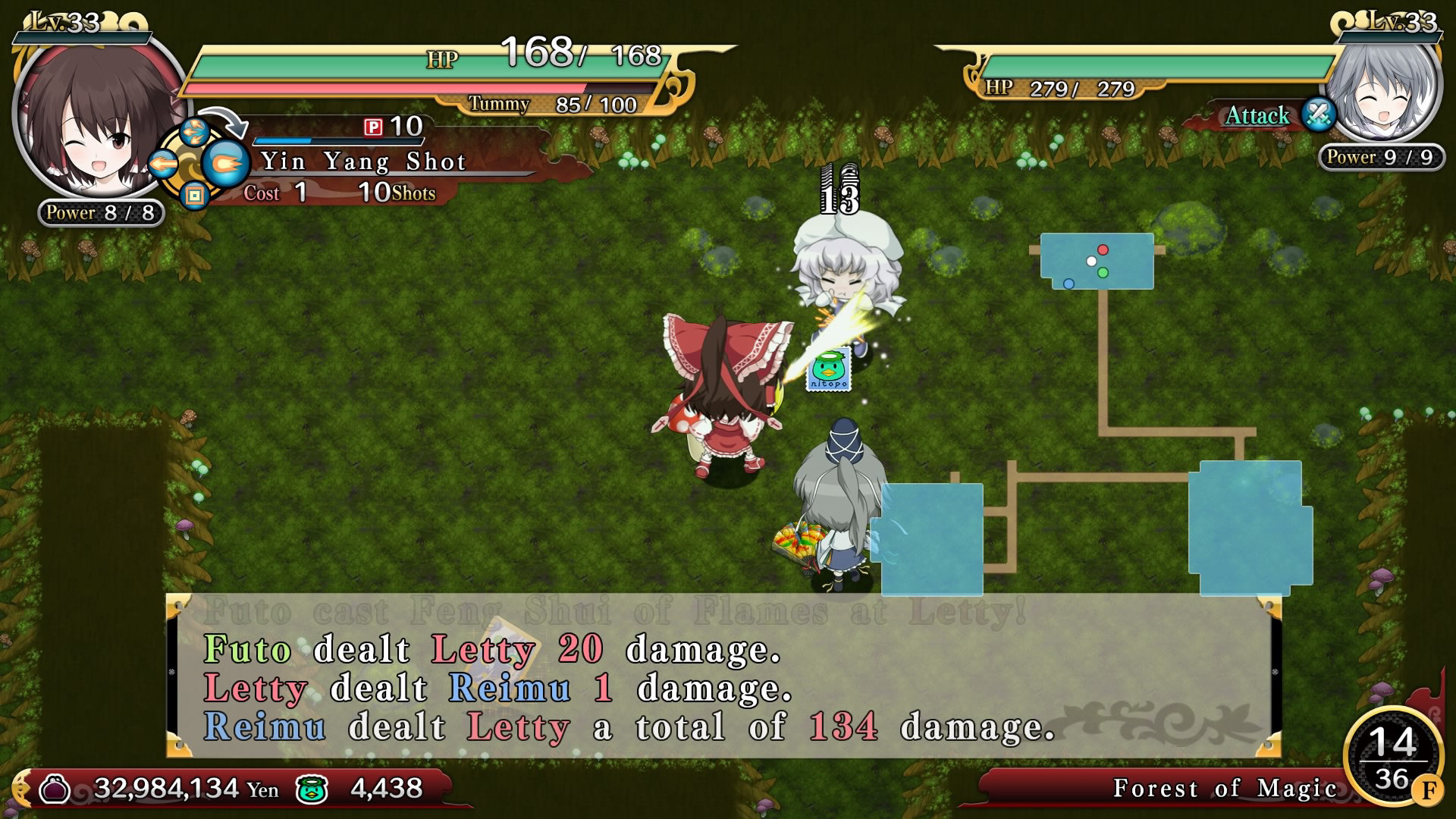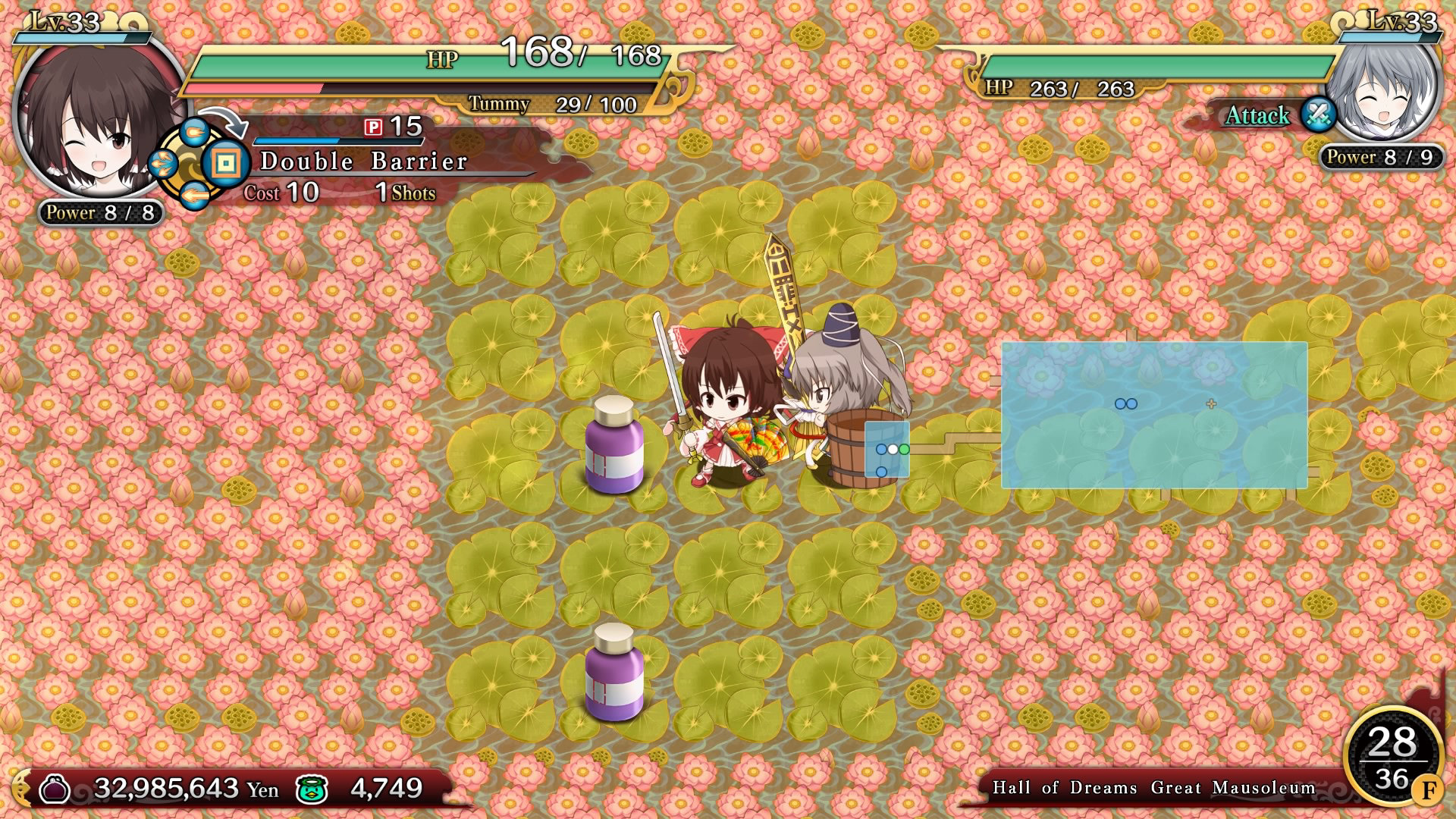NIS is well known for bringing niche games to the west in bulk, and it’s fantastic. Weird Japanese games that will speak to a very specific audience is great, as it gives gamers significantly more options for these niche JRPG’s, and this continues to be the case with Touhou Genso Wanderer. This game is a unique merge of genres with a gorgeous style and very distinct JRPG flavours.
Touhou Genso Wanderer tells the story of Reimu Hakurei, who is hanging out with Rinnosuke when he pulls out a golden ball which makes him go psycho. In a true Lord of the Rings, One Ring moment, they both go psycho over the ball and everything falls apart. Reimu must try to make her way home and fight enemies created by the orb.At this point the story became near impossible to follow, but suspect it may make significantly more sense for people familiar with the Touhou franchise.

The game itself is an isometric dungeon crawler, with anime style graphics, and it’s very competent at what it does, with some exceptional missteps. The bulk of your time will be walking around the grid attacking enemies, making your way between locations. This aspect is very much a strategy RPG. When you have turns so does the enemy, but it doesn’t hurt to stop, survey a situation, then act, as making some rushed movements may result in multiple enemies getting the edge on you.
The dungeon play works well, but does start to get repetitive quickly, which unfortunately does break up the flow of the game at times, but with its average story, if you aren’t following that, the repetitive gameplay is great for multitasking.

One of the biggest flaws with Touhou Genso Wanderer is the amount of space it uses on the screen for, well, not the dungeon. Many JRPG fans will recognise stat bars such as health, and the map which is transparent at least, covering a significant amount of screen, but the info bar is terrible. The info bar is a surprisingly big section in the bottom of the screen which has a line each time something happens, such as Reimu dealt Futo 30 damage. This feature would standout regularly and while it’s also kind of transparent, it’s still unnecessarily annoying.
The game also borrows rogue-like elements, including the fact that if you die, you need to start the dungeon again. Fortunately, your items you level up retain their levels, you on the other hand do not. This means it’s super important to not die as repeating dungeons when you are in deep can be tedious.
Not dying means keeping your health up, as well as your fullness, as if you get too hungry, death awaits, which becomes annoying very quickly. The health issue is generally fine to keep on top of if you use your healing items, but sudden difficulty spikes can result in seemingly unnecessary deaths, which happens more than one would like.

Touhou Genso Wanderer’s biggest strength is its aesthetics. The backgrounds look uninteresting, though they tend to be nice and bright adding an interesting tone to the dungeons. The characters, both your team and enemies are beautifully animated chibi characters. For the unfamiliar they are anime characters who huge heads with small bodies and it looks stunning. The character animation designs are stunning and certainly the highlight of the game.
Touhou Genso Wanderer is a competent dungeon crawler with some drawbacks, but a stunning look. Unfortunately, the graphics style alone can’t make up for repetitive gameplay and a bland story with many unnecessary text bubbles diluting the little story there is.

Released: April 2017
Rating: PG
Platforms: PlayStation 4
Genre: JRPG
Developer: NIS America
Publisher: NIS America</p

